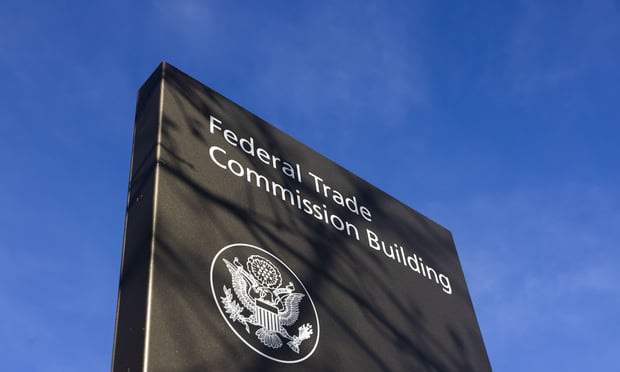Harvey M. Schwartz, who will succeed David A. Viniar as GoldmanSachs Group Inc.'s chief financial officer in January, learnedearly in his career about tough times on Wall Street.
|The 6-foot-4 Rutgers University graduate watched tears streamdown the face of a middle-aged colleague as the stock marketcrashed on Oct. 19, 1987. Two years later, he was working atCiticorp when the bank cut thousands of jobs.
|Schwartz wasn't deterred. After 15 years at Goldman Sachs, mostrecently as co-head of global securities, he was tapped to replacethe longest-serving CFO of any major Wall Street firm. The job willmake Schwartz, 48, one of the most visible executives at thefifth-biggest U.S. bank by assets as it cuts costs and grappleswith weak economic growth and regulatory changes that pushedfirst-half revenue to the lowest since 2005.
|“Whenever we were in a situation where things were either toughor difficult, and you were looking to see who was around to work onit, Harvey was always there,” said Jon Winkelried, co-president ofGoldman Sachs when he left in 2009 after 27 years at the firm. “Hedoesn't run from difficulty, it kind of attracts him. That's apretty darn good feature to have.”
|Following Viniar as CFO would be a challenge at any time. ForSchwartz, the task is compounded because Goldman Sachs's businessmodel is in doubt. The company's shares, like those of somecompetitors, trade below liquidation value as investors questionwhether banks will be able to generate a return on equity, ameasure of how well a firm reinvests their money, sufficient tocompensate them for the risks they're taking.
|To improve returns, the New York-based bank cut $1.4 billion ofcosts beginning last year and said in July that it's trimming anadditional $500 million, mostly from compensation.
|Schwartz, who declined to comment for this story, has seen thegood, bad and ugly of Wall Street since his inauspicious start 25years ago at J.B. Hanauer & Co. in Parsippany, New Jersey. Hearrived at that firm's trading floor just in time to witness theDow Jones Industrial Average plunge 22.6 percent on what was laterdubbed “Black Monday,” according to people who have heard himrecount his career.
|He spent six months in 1988 and 1989 at First InterregionalEquity Corp., according to Financial Industry Regulatory Authorityrecords. About a decade later that firm's president, controller anddata-processing supervisor pleaded guilty to criminal charges thatthey defrauded more than 1,700 investors of about $115 million in aPonzi scheme.
|Blankfein, Cohn
|In 1989, Schwartz took a job at Citicorp, then the largest U.S.bank, where his early roles included consolidating contracts withvendors as the firm scaled back operations, said the people whohave heard him describe his career.
|Schwartz eventually joined the bank's credit-training programand developed a specialty structuring derivatives for companies inthe petroleum, metals and mining industries, the people said. Afterobtaining a master's degree in business administration fromColumbia University in 1996, he landed a job in 1997 as a vicepresident of J. Aron, the currency and commodities-trading unit ofGoldman Sachs.
|J. Aron, managed at the time by Lloyd C. Blankfein, was in theprocess of merging with Goldman Sachs's fixed-income unit into abusiness called fixed income, currencies and commodities, or FICC.Blankfein had named Gary D. Cohn as global head of commodities ayear earlier.
|As the FICC division's contribution to revenue surged over thenext decade, so did the careers of Blankfein, Cohn, and other J.Aron alumni, including Schwartz. Blankfein, 58, is now chairman andchief executive officer of Goldman Sachs, and Cohn, 52, ispresident and chief operating officer. Seven of the 30 members ofthe firm's management committee worked at J. Aron.
|Three former employees interviewed for this story who spokeanonymously because they feared they would jeopardize relationshipsat the company attributed Schwartz's promotion, in part, to hisclose relationships with Cohn and Blankfein.
|Others who have worked with Schwartz dispute that and point tohis relationships with colleagues across the firm.
|“Obviously, Gary and Lloyd wouldn't put him in that job unlessthey felt comfortable and respected him,” said Michael Troy, wholater helped run fixed-income sales with Schwartz and served as hisdeputy before retiring in 2011 after 27 years at the company. “ButI think that they're also smart enough to know that he needs tohave relationships, which he does, with many different constituentsthroughout the firm.”
|'Step Back'
|One of them is Susan J. “Susie” Scher, a New York-based partnerin the investment-banking division.
|Scher first met Schwartz in the late 1990s, when they were bothvice presidents, a mid-level position, and were attending a meetingwith a Canadian commodity-producing company, she said in a phoneinterview. While Schwartz's role was in sales and trading, heseemed to know the firm better than the investment bankersresponsible for the relationship, Scher said. He proposed a complexderivatives instrument to help manage the client's risks anddisplayed a better understanding of the products than a more seniorexecutive at the meeting, she said.
|In 2004, Scher found herself working for Schwartz when he movedinto the investment-banking division to become co-head of a newfinancing group responsible for helping clients issue debt andequity. Schwartz was quick to learn the business, versatile inadapting to different types of clients and became a mentor whohelped Scher win election to partner in 2006, she said.
|“He's the kind of guy who will say to you, 'You're thinkingabout it the wrong way, you're worrying too much about this littleteeny aspect of it, step back, think big picture,'” said Scher, 47.“Even today, sometimes when I'm facing some sort of situation, Ithink, 'What would Harvey do?'”
|Schwartz's experience in the investment-banking division, thoughshorter than two years, is a crucial background for a CFO,Winkelried said in a phone interview.
|“If you look at the history of the firm, there are not a lot ofpeople who have actually lived and functioned at a kind of a highmanagement level in both the sales and trading world and theinvestment-banking world, and Harvey has,” said Winkelried, who wasco-president and co-COO with Cohn. “Harvey is extremelywell-prepared.”
|Colleagues and investors credit Viniar, 57, who joined GoldmanSachs 17 years before Schwartz, with building the administrativeside of the firm, known internally as “the federation,” whichincludes technology, treasury, controllers and risk management. Allwill be Schwartz's responsibility.
|CFO Salary
|Viniar, as the only CFO Goldman Sachs has had in 13 years as apublic company, helped manage the transition from a partnership andplayed a key role in navigating the financial crisis. The CFO, notthe CEO, speaks to investors and analysts on quarterly earningscalls, making him one of the bank's most public figures.
|He's also one of the few executives whose pay is disclosed.Viniar was awarded a salary of $1.85 million last year, a $3million cash bonus and $7 million in restricted stock units.Schwartz, whose pay hasn't been made public previously, willreceive the same salary as Viniar and be eligible for a bonus,according to a company filing.
|Some employees and analysts said they expected TreasurerElizabeth Beshel Robinson, 43, or Sarah E. Smith, 53, the chiefaccounting officer, to succeed Viniar. One former partner, whorequested anonymity to protect his relationship with the firm, saidhe and people he knows within the company expected Pablo J. Salame,46, a co-head of sales and trading with Schwartz, to get the jobafter he relocated to New York from London last year.
|David Wells, a spokesman for the bank, declined to comment aboutthe selection process.
|Compared with Viniar, “Harvey has less experience at thebroad-based risk-management role, but David built him a team, soit's only that last 5 percent that Harvey has to make thedifference,” said James Kennedy, CEO of Baltimore-based assetmanager T. Rowe Price Group Inc., a client of Goldman Sachs and ashareholder in the company.
|To be as successful as Viniar, a CFO must be able to say no totraders and bankers who want to make loans or execute trades thatcould reap significant profits while putting the firm's capital atrisk, said Brad Hintz, a Sanford C. Bernstein & Co. analyst inNew York who previously worked as CFO at Lehman Brothers HoldingsInc.
|“To survive in a job that by definition is going to make youunpopular requires an incredible skill set,” Hintz said. “Yourentire job is to say no when what is career-enhancing is to sayyes.”
|Senate Investigation
|One Viniar action that received particular notice was his Dec.16, 2006, instruction to the firm's mortgage division to reduce itsholding of assets tied to home loans. The decision proved fateful:In 2007, as competitors including Bear Stearns Cos., Citigroup Inc.and Merrill Lynch & Co. racked up losses related to subprimehome loans, Goldman Sachs posted its biggest profit ever and paidrecord bonuses.
|The move later backfired. The Securities and Exchange Commissionand a Senate subcommittee accused the firm of sellingmortgage-linked securities to clients at the same time GoldmanSachs traders were betting their value would fall. Documentsreleased by the Senate Permanent Subcommittee on Investigationsincluded a May 11, 2007, e-mail that Schwartz, then overseeingsales in the securities division, sent to senior colleagues aboutcollateralized debt obligations.
|“[D]on't think we can trade this with our clients andf [sic]then mark them down dramatically the next day,” Schwartz wrote inthe e-mail, according to the subcommittee's report.
|As asset prices began to swoon in 2007, Schwartz emphasized tohis sales staff the importance of staying in touch with bothclients and the firm's traders.
|“Harvey always encouraged conversation, dialogue, picking up thephone, having the tough conversations, whether it's with clients orwhether it's with your people,” Stacy Bash-Polley, 43, who now runsGoldman Sachs sales for all U.S. macro and emerging-marketproducts, said in an interview. “He made you feel like an owner,and you took ownership of the business and the franchise. And, no,they weren't easy conversations, they were very difficultconversations to have.”
|Schwartz became one of four co-heads of global sales and tradingin February 2008 as the financial world was about to fall apart.Bear Stearns, then the fifth-biggest U.S. securities firm,collapsed two weeks later and was sold to JPMorgan Chase & Co.The Lehman Brothers bankruptcy that September ended creditors'confidence in Wall Street companies that relied on borrowed money,leading Goldman Sachs and Morgan Stanley to raise capital andconvert to banks, putting them under the oversight and protectionof the Federal Reserve.
|'Harvey's Desk'
|As one of two co-heads in the U.S. and a member of the firm'srisk committee since April 2008, Schwartz was forced to wrestlewith decisions about how to protect Goldman Sachs and allocatecapital as the crisis led the firm to sell assets and hold morecash and other liquid securities.
|“All of those things basically landed on Harvey's desk,” saidWinkelried, 53.
|Schwartz's client skills were put to the test when the SEC suedthe firm in 2010, alleging the bank had misled investors in a 2007mortgage-linked instrument known as Abacus. Schwartz and David B.Heller, the other New York-based co-head of sales and trading,convened a meeting to find out everything they could about thetransaction, one Goldman Sachs partner said.
|The lawsuit, and a Senate subcommittee hearing that includedtestimony from executives including Blankfein and Viniar,highlighted a tension at the center of Wall Street trading firmslike Goldman Sachs: Because the bank often takes the other side ofa customer's trade, its interest can be directly opposed to theclient's.
|Schwartz was appointed to the business-standards committeecreated to review practices in the wake of the SEC charge, whichwas settled for $550 million. The committee reiterated GoldmanSachs's business principles, drafted in the late 1970s, which startwith “our clients' interests always come first.” As CFO, Schwartzwill be responsible for protecting the company's interests, even ashe enables it to serve clients.
|“Harvey is going to put the firm first, but he does not do thisto the detriment of the firm's clients,” Kevin Ulrich, a formerGoldman Sachs partner who runs Anchorage Capital Group LLC, a $10billion New York-based hedge-fund, said in a phone interview. “Heis neither an overly aggressive, nor overly cautiousindividual.”
|Schwartz also has helped lead Goldman Sachs's response tofinancial regulation, including serving as co-chairman of acommittee that holds phone meetings at 8:30 on Sunday nights,according to a person familiar with the matter. He has been anadvocate for the bank with the U.S. Treasury Department indiscussions about the Volcker rule, which limits proprietarytrading, the person said.
|'Lackluster Student'
|A native of Morristown, New Jersey, Schwartz has donated morethan $1.5 million to provide financial aid to students attendingRutgers, according to Douglas Greenberg, a history professor at theuniversity who was dean of the school of arts and sciences when hemet Schwartz about four years ago. Schwartz also established anetwork of Rutgers alumni at Wall Street firms who help providestudents and graduates with internships and jobs, Greenbergsaid.
|“He told me that he had been sort of a lackluster student inhigh school,” Greenberg recalled in an interview. “He came toRutgers not quite sure what he wanted to do, but he was very goodwith numbers. He had to borrow money to finish school. And heexpressed his gratitude that somebody had been willing to help himout.”
|Schwartz, twice divorced with a 24-year-old daughter, lives withAnnie Hubbard, whom he met in 2003, a year after she was shothelping subdue a hostage-taker at an East Village bar.
|Schwartz and Hubbard make an appearance in the best-seller “Eat,Pray, Love,” where they're credited with helping author ElizabethGilbert buy a house for a friend in Indonesia.
|“I sent out this e-mail to everybody that I knew, and I got ane-mail back from Annie saying that her boyfriend, Harvey, wouldlike to contribute $10,000 to the cause,” Gilbert said in aninterview. “So my first experience with him was hopping on mybicycle and flying down the road to my friend Wayan's and tellingher that we'd done it, that we could buy her house and that she wasgoing to have a place to live in.”
|Schwartz himself likes to get up early to cycle in Manhattan'sCentral Park, according to colleagues. He's also an enthusiasticand mediocre golfer, said Jim Rothenberg, who runs LosAngeles-based Capital Group Cos., a Goldman Sachs client and itssecond-biggest shareholder, after the bank's own employees.
|Rothenberg, who plays with Schwartz about three times a year,said Schwartz's high-teens golf handicap is a reassuring sign he'snot playing too much.
|“I wouldn't say Harvey's a good golfer, which is a good thing ifhe's going to be CFO of Goldman Sachs,” he said.
|Bloomberg News
|Copyright 2018 Bloomberg. All rightsreserved. This material may not be published, broadcast, rewritten,or redistributed.
Complete your profile to continue reading and get FREE access to Treasury & Risk, part of your ALM digital membership.
Your access to unlimited Treasury & Risk content isn’t changing.
Once you are an ALM digital member, you’ll receive:
- Critical Treasury & Risk information including in-depth analysis of treasury and finance best practices, case studies with corporate innovators, informative newsletters, educational webcasts and videos, and resources from industry leaders.
- Exclusive discounts on ALM and Treasury & Risk events.
- Access to other award-winning ALM websites including PropertyCasualty360.com and Law.com.
*May exclude premium content
Already have an account? Sign In
© 2024 ALM Global, LLC, All Rights Reserved. Request academic re-use from www.copyright.com. All other uses, submit a request to [email protected]. For more information visit Asset & Logo Licensing.







